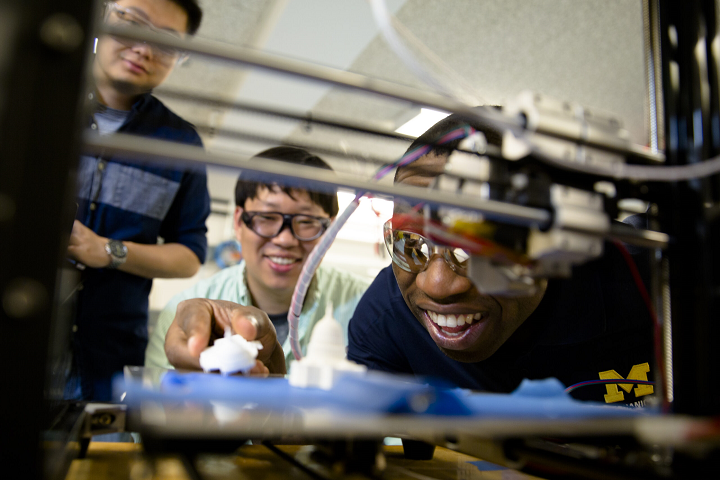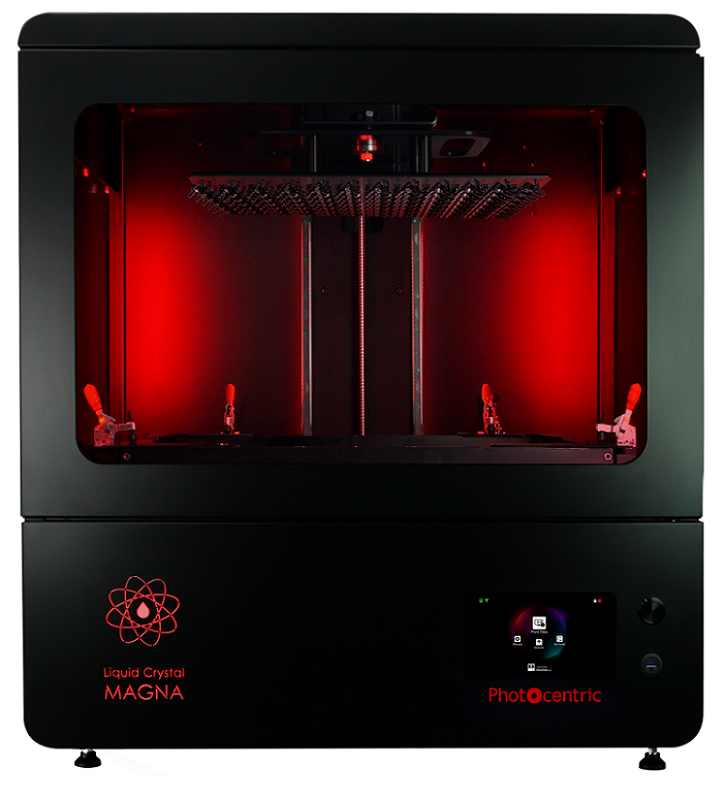Business first in today’s 3D Printing News Briefs, as The Spaghetti Detective has rebranded and Formlabs sharpens its focus on global expansion. On to software next, as a 3D printing algorithm developed several years ago made its debut at RAPID. Photocentric launched a new LCD screen-based 3D printer. Finally, a new 6,000 industrial robot developed at Cornell University could lead to more efficient, sustainable construction.
The Spaghetti Detective Rebrands to Obico
Open source smart AI software The Spaghetti Detective, which detects and stops failed prints automatically, recently went through a rebranding and is now called Obico. Why the name change? The platform has introduced several new features, such as OctoPrint Tunneling and a mobile app for remote monitoring and controlling your 3D printer, and as it expanded, the name just didn’t quite cover everything it had to offer. But the name Obico isn’t all that’s new—the platform’s open source offerings have also expanded with a public API, support for plugins, and also support for the Klipper ecosystem, not just OctoPrint. The Pro Pricing has remained the same, with the exception of removing the Shop Plan, and you can check out the blog post for other relevant changes.
“We have done the plumbing work to make moving to Obico as smooth as possible for you. All your current settings in your The Spaghetti Detective account have been migrated to Obico.”
Formlabs Appoints New APAC General Manager
In an effort to continue its expansion around the world, Formlabs announced that it’s grown its global leadership team, and stepped up its commitment to the Asia Pacific AM market, by appointing Michael Agam as the new APAC General Manager. Most recently the president of South Asia at Stratasys and the former CEO of New Hope Data and MNC Solutions, Agam has over 15 years of experience in international business leadership and working with companies and technology leaders in the APAC region. Now he will play an important part in establishing and growing the company’s business there, as Formlabs continues to scale in the global market and deliver mass production and customization via 3D printing, which is expected to grow quickly over the next five years in the region.
“Formlabs is focused on global expansion to deliver mass production and customization, reduce supply chain disruption, and enable new methods of invention through 3D printing,” said Luke Winston, Formlabs Chief Business Officer. “Asia-Pacific presents a significant opportunity for Formlabs and Michael’s appointment to our leadership team is an important next step. He has both a proven track record and key experience in Asia-Pacific that will be critical to successfully establishing the company in the region.”
Launch of Ulendo Software for Speeding up 3D Printing

Chinedum Okwudire and students in his lab at the University of Michigan demonstrated an early version of the FBS software in 2017. Image credit: Evan Dougherty, Michigan Engineering
In 2017, the Smart and Sustainable Automation Research Lab (S2A Lab) at the University of Michigan College of Engineering developed a filtered b-spline (FBS) software algorithm that could double the speed of 3D printing by telling the system how to compensate for vibrations. A Kickstarter campaign for the solution ran in 2020, and while it was ultimately unsuccessful at funding the software, dubbed Ulendo by its spinoff company of the same name, last year it received a $250,000 NSF research grant. The product was officially launched at the recent RAPID + TCT Conference in Detroit and is now available on the market. FBS refers to the mathematical function the team used to translate machine commands from the typical expectation to ones that would compensate for vibrations in desktop 3D printers—allowing the systems to double their speed without consuming too much energy or sacrificing accuracy, and lowering the cost per 3D printed part as well.
“If you want to reduce vibration in a moving object, most times you can do that by slowing down. But as 3D printing is already very slow, that solution creates another problem. Our solution allows you to print fast without sacrificing quality,” explained Chinedum Okwudire, Ulendo’s founder and an associate professor of mechanical engineering at the University of Michigan.
“Say you want a 3D printer to travel straight, but due to vibration, the motion travels upward. The FBS algorithm tricks the machine by telling it to follow a path downward, and when it tries to follow that path, it travels straight.”
Photocentric Launches Liquid Crystal Magna v.2 3D Printer
Specialist resin and LCD printer manufacturer Photocentric, which invented LCD 3D printing, has launched the latest version of its Liquid Crystal (LC) Magna system, the reengineered LC Magna v.2. The company says the versatile printer is rugged and more efficient, and offers much faster print speeds, so it’s good for on-demand, small batch, or full production applications. The LC Magna v.2 is said to deliver accurate end-use parts at scale, and offers a new hydrophobic platform, designed to reduce waste and improve productivity even further. Each one comes pre-calibrated to ensure a speedy installation, and the system is supported by a range of high-performance resins and post-processing units for an excellent value proposition.
“Magna is the jewel in the crown of Photocentric, and we’re thrilled to launch this new model which builds on the solid foundations of its predecessor. The product development team has maintained everything that has made the LC Magna so popular with our customers – including its impressive build volume – whilst adding a range of features that have boosted print speeds, further improved reliability and substantially increased processing power,” stated Sally Tipping, Sales Director, Photocentric. “We are tremendously excited about the possibilities of the new Magna and can’t wait to see what our customers do with it.”
Cornell’s Industrial Robot 3D Printing Powering Greener Construction

The Bovay Civil Infrastructure Laboratory Complex has a new tenant: a roughly 6,000-pound industrial robot capable of 3D printing large-scale structures that could make construction more sustainable.
Finally, Cornell University received a 6,000 lb. IRB 6650S Industrial Robot system this year, which can be used to 3D print large-scale structures more sustainably by getting rid of waste. The Bovay Civil Infrastructure Laboratory has been training users to use the versatile robotic arm system, and several medium-size test prints, like planters and benches, have been successfully completed. The robot is currently 3D printing with mortar, as anything larger could damage the pump system, but Sriramya Nair, assistant professor of civil and environmental engineering, and her team plan to build an extruder head that can print steel fiber-reinforced concrete, so the lab can 3D print and test full bridge components. Nair, who plans to incorporate the 3D printing system into her “Sustainability and Automation: The Future of Construction Industry” class this fall, also hopes her team can develop its own mixture as well and reduce the carbon footprint. Regardless, the robotic 3D printer saves times and wastes a lot less material.
“Any time you pour cast-concrete, like for a sidewalk, you have to set up all the molds. It takes labor, materials, you have to stake it all down. All of that stuff takes a lot of time. Every change you make to a concrete structure, you have to modify the mold or get a new mold and spend labor doing that,” explained James Strait, manager of tech services for the Bovay Lab. “That is a lot more difficult than going to a computer program and saying, ‘You want this rounded?’ Click. A couple of hours and you’re done.”
Subscribe to Our Email Newsletter
Stay up-to-date on all the latest news from the 3D printing industry and receive information and offers from third party vendors.
You May Also Like
Gorilla Sports GE’s First 3D Printed Titanium Cast
How do you help a gorilla with a broken arm? Sounds like the start of a bad joke a zookeeper might tell, but it’s an actual dilemma recently faced by...
Nylon 3D Printed Parts Made More Functional with Coatings & Colors
Parts 3D printed from polyamide (PA, Nylon) 12 using powder bed fusion (PBF) are a mainstay in the additive manufacturing (AM) industry. While post-finishing processes have improved the porosity of...
$25M to Back Sintavia’s Largest Expansion of Metal 3D Printing Capacity Since 2019
Sintavia, the digital manufacturing company specializing in mission-critical parts for strategic sectors, announced a $25 million investment to increase its production capacity, the largest expansion to its operations since 2019....
Velo3D Initiates Public Offering in a Bid to Strengthen Financial Foundations and Drive Future Growth
Velo3D (NYSE: VLD) has been among a number of publicly traded 3D printing firms that have attempted to weather the current macroeconomic climate. After posting a challenging financial report for 2023,...


































